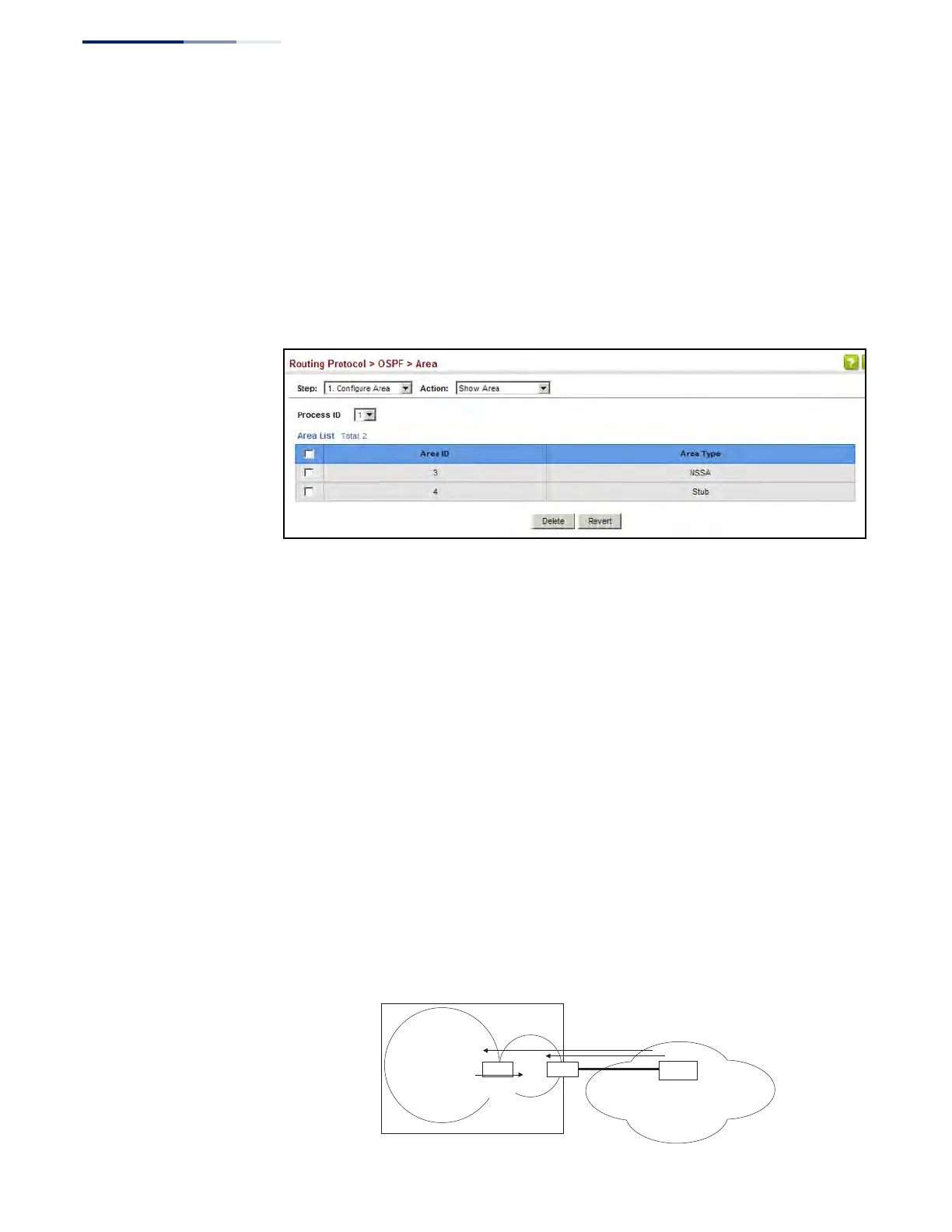Chapter 19
| Unicast Routing
Configuring the Open Shortest Path First Protocol (Version 2)
– 726 –
To show the NSSA or stubs added to the specified OSPF domain:
1. Click Routing Protocol, OSPF, Area.
2. Select Configure Area from the Step list.
3. Select Show Area from the Action list.
4. Select a Process ID.
Figure 491: Showing NSSAs or Stubs
Configuring
NSSA Settings
Use the Routing Protocol > OSPF > Area (Configure Area – Configure NSSA Area)
page to configure protocol settings for a not-so-stubby area (NSSA).
An NSSA can be configured to control the use of default routes for Area Border
Routers (ABRs) and Autonomous System Boundary Routers (ASBRs), or external
routes learned from other routing domains and imported through an ABR.
An NSSA is similar to a stub. It blocks most external routing information, and can be
configured to advertise a single default route for traffic passing between the NSSA
and other areas within the autonomous system (AS) when the router is an ABR.
An NSSA can also import external routes from one or more small routing domains
that are not part of the AS, such as a RIP domain or locally configured static routes.
This external AS routing information is generated by the NSSA’s ASBR and
advertised only within the NSSA. By default, these routes are not flooded onto the
backbone or into any other area by ABRs. However, the NSSA’s ABRs will convert
NSSA external LSAs (Type 7) into external LSAs (Type-5) which are propagated into
other areas within the AS.
Figure 492: OSPF NSSA
backbone
NSSA
ABR
default external
route for local AS
ASBR
external network
Router
default external
route for another
routing domain
7
5
AS

